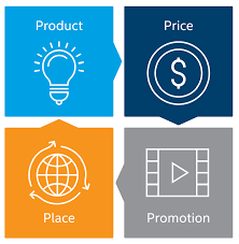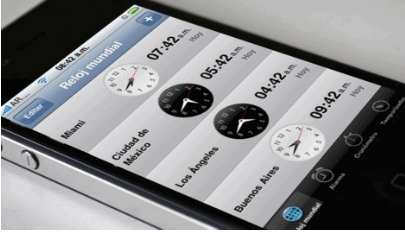New direction, both strategic and tactical, will need to respond to shifts brought on by the coronavirus - in economic conditions, consumer attitudes, and expected societal behavior. For instance, there have been numerous discussions and articles by thought leaders about businesses needing to embrace and accelerate their digital transformation in response to this crisis (such as this one by the World Economic Forum). The WEF article correctly points out that the stakes have been raised in this crisis: “One could see the current times as the first real test of the digital-first business mantras that have been extolled over the first part of this century.” Indeed, there is little time to waste in figuring it out: “This combination of scalable and agile capabilities is what will define the short and medium-term success of businesses, whether large or small.”
The key to this agility in times of crisis is understanding and responding to how people are assessing and prioritizing needs and wants in a different way. In my view, consumers will revert back to needs instead of wants (as in Maslow’s hierarchy), choosing to simplify their lives and place more value on family, friends, and community. Some may turn (or return) to spirituality and faith. With this more basic mindset, consumers will decide their “must haves” vs. “nice to haves.” They will more carefully consider spending and buying decisions, resetting what I call “anchors of value.” How does this affect our marketing approach? The 4 P’s can provide a lens through which to view and answer this question - let’s go through them.
Also, supply chain disruptions have impacted product availability, and may lead to a re-thinking of future roadmaps, designs, and features & options. Flexibility with respect to procurement and production should also be given greater consideration.
Takeaway: Listen to your customers for a re-ordered set of desired attributes. Also, the procurement, production, and operational constituencies will have a louder voice in the process as well – agility will be as important as quality and scalability.
2.) Price – Fair and transparent pricing is more important than ever, because people will remember. Charge more only if people can clearly understand (and tacitly agree with) why it’s happening. If you are on the fence about trying to raise prices, then it’s probably not the right thing to do.
However, price elasticity will be tested and reset for many categories, as reductions may no longer be enough to spur demand (see airfares, cruises, hotel rooms, and luxury accessories). Conversely, will overpaying still be as much of a status thing?
The dynamics of volume pricing could also change, as bulk discounts may now apply more for some product categories (clothing & apparel) than others (toilet paper, vitamins & medicines, cleaning products).
Lastly, as delivery logistics systems hit capacity and cause delays, charging for reliable shipping & delivery for online purchases could make a comeback. Will the market accept paid shipping to ensure they receive needed items?
Takeaway: Understand how people value things and what they will pay a premium for. What pricing strategies (i.e. promotional, surge, etc.) will be effective in a more needs vs. wants-driven world? How will the “paradox of value” apply as consumers set new “anchors of value” in post-pandemic life?
3.) Place – E-commerce is now table stakes, and is a big part of the accelerated digital transformation discussed above. You need to make sure the user experience is state of the art. Relatedly, smooth & safe delivery and pickup logistics (variations on “BOPIS” - buy online, pickup in store) are the expectation in the new norm. As such, direct-to-consumer brands (typically digitally native) have a head start and are well positioned to take market share. The peak-and-decline of the direct-to-consumer e-commerce model – increasingly discussed prior to this crisis - will now look overstated.
As marketers think beyond the pandemic, how does one view retail’s ongoing existence? The implications for (already suffering) brick-and-mortar stores could be staggering. Do they remain, or evolve into showrooms and service centers? Retail spaces would probably need to de-clutter and open up in order to accommodate more social distancing. Perhaps “shopping” itself survives, but eventually becomes a purely leisure activity. In that case, merchandisers would have to play up the entertainment aspects of retail – of bonding with friends while on a treasure hunt of sorts to discover new products and bargains.
Another "place" consideration: brands’ ability to quickly shift product mix and distribution between B2C and B2B channels in the case of unexpected disruptions will be a strategic advantage.
Takeaway: Big changes to merchandising, with the digital transformation of retail condensed and accelerated. Companies who are behind the curve in embracing digital customer engagement and e-commerce will be at a distinct disadvantage. The notion of shopping will change, and traditional retail models will have to creatively adjust in response.
4.) Promotion – Advertising and promotion can make or break marketers in this environment, with audiences full of raw emotion and focusing on basic needs. Authentic is the word to key in on, and actions speak louder than words. Lead with compassion and empathy, as marketing exec Jeff Raymond aptly put in his Marketing Profs article on reassessing the 4P’s amid Covid-19: “As for what messages are being promoted… organizations should take care to blend commerce and compassion.” Be careful, However. Doing cause marketing campaigns in a contrived way could be called out by the public and backfire – as recently happened with Reese Witherspoon’s Draper James. Be ready to invest more time, thought, and specialized expertise to get it right to avoid the angry (virtual) mob.
This is when thoughtfully developed brand tenets come to the fore, serving as a foundation for engaging and inspired advertising & communication. Promotional activities are OK, if well planned out and they incentivize the right response for the right reasons. If the business needs to liquidate inventory – just say that, and find a way to demonstrate the “win-win” for the customers and downstream stakeholders. “We are all in this together” should be more than a promotional tag line.
Takeaway: There will be less room for error - in all phases of executing promotions and advertising. Not only will campaigns be scrutinized by management for ROI-positive performance, but they will also be checked by brand people, legal stewards, and most importantly customers - for clarity of intent and consistency between the values of the brand and the community of customers.
An Additional Takeaway: There is a 5th “P” to consider - Preparedness. This goes to how well your organization can rapidly and unexpectedly shift elements of strategy due to outside forces, constraints, market disruptions, or opportunities. This touches on process design, analytical capabilities, resource planning, technology infrastructure, organization culture (and morale), and management skillset. Do not neglect to think about this when setting your go-forward strategies.
Marketing has always been a tricky mix of science & analytics, business, psychology, and creativity. Radical shifts in consumer attitudes & behavior, as well as business best practices are only going to make marketing harder. But we can manage these complexities by breaking down them into models such as the 4P’s of marketing. Looking through this framework helps us adjust our mindset, prepare for the future, and orient around new strategies when plans are forced to change.





 RSS Feed
RSS Feed
